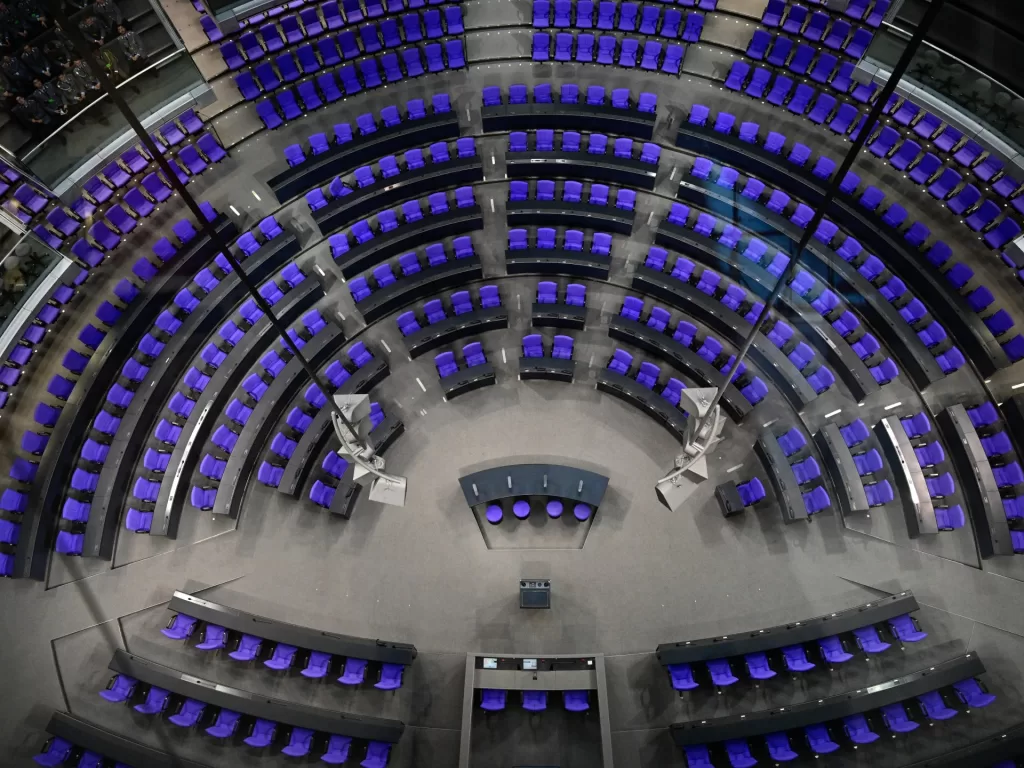After collapse of Chancellor Scholz’s three-party coalition, President Frank-Walter Steinmeier backs timeline for February 23 vote.
Germany is set to hold snap elections on February 23, in an effort to establish a stable government following the collapse of Chancellor Olaf Scholz’s three-party coalition last week.
The election date, agreed upon by the country’s two biggest parties on Tuesday, represents a compromise between the conservative opposition, which pushed for a January vote to avoid leaving Germany without clear leadership, and Scholz, who preferred mid-March to allow more time for authorities and parties to prepare.
The February 23 date is predicated on Scholz holding a confidence vote on December 16 that he is expected to lose. After that, President Frank-Walter Steinmeier will have 21 days to dissolve the Bundestag or lower house of parliament. Elections would have to be held within the next 60 days.
Steinmeier said he backed the timeline and deemed the targeted date “realistic”.
The head of state urged all mainstream parties to cooperate responsibly until then to “ensure Germany’s internal and external security and international reliability in this transitional phase”.
The agreement between Scholz’s Social Democratic Party (SPD) and the conservative opposition Christian Democratic Union (CDU) and their Bavarian allies the Christian Social Union (CSU) aims to restore political stability at a time when Europe’s biggest economy is set to shrink for a second year in a row.
Inflation, Russia’s war on Ukraine, intensifying competition from China and United States President-elect Donald Trump’s return to power on January 20 have combined to create a perfect storm for Germany, whose economy previously prospered from abundant energy, and a benign, pro-trade international political environment.
The snap election creates a leadership vacuum at the heart of the European Union just as it seeks a united response to Trump on issues ranging from Russia’s war in Ukraine to the future of the US-led NATO alliance.
Future scenarios
Scholz took office in late 2021, taking over from the CDU’s Angela Merkel, in a three-way coalition with the left-leaning Greens and the neoliberal and pro-business Free Democratic Party (FDP).
But mounting differences over economic and fiscal policy came to a head last week when Scholz fired FDP-aligned Finance Minister Christian Lindner, prompting the small party to leave the government. The Free Democrats demanded spending cuts on a scale their left-wing partners were unwilling to countenance.
The government collapse came on the day Trump won the race for the US White House.
Scholz’s coalition marked the first time a tripartite alliance has ruled at the national level, and it may not be the last, given Germany’s increasingly fragmented political party landscape.
Fears about immigration have driven the rise of the far-right Alternative for Germany (AfD) party. It is now polling at close to 20 percent, but other parties have pledged to shun it as a coalition partner.
The latest polls put the centre-right CDU/CSU alliance firmly in the lead at 32 percent.
To win a majority, however, the conservatives would likely need the future backing of the SPD, which is currently polling at 15.5 percent, plus a third party.
A leader in Scholz’s Social Democrats said the party stood by the chancellor and brushed away suggestions that Scholz should step aside for another candidate, such as the currently more popular Defence Minister Boris Pistorius.
“Now it’s about experience and competence and I am sure that Olaf Scholz is the right candidate,” SPD parliamentary group leader Rolf Mutzenich told reporters.
The February 23 date will force politicians to run their campaigns in the dark and cold of winter, when voters will be less enthusiastic to flock to outdoor events than during the usual summer campaign seasons.
